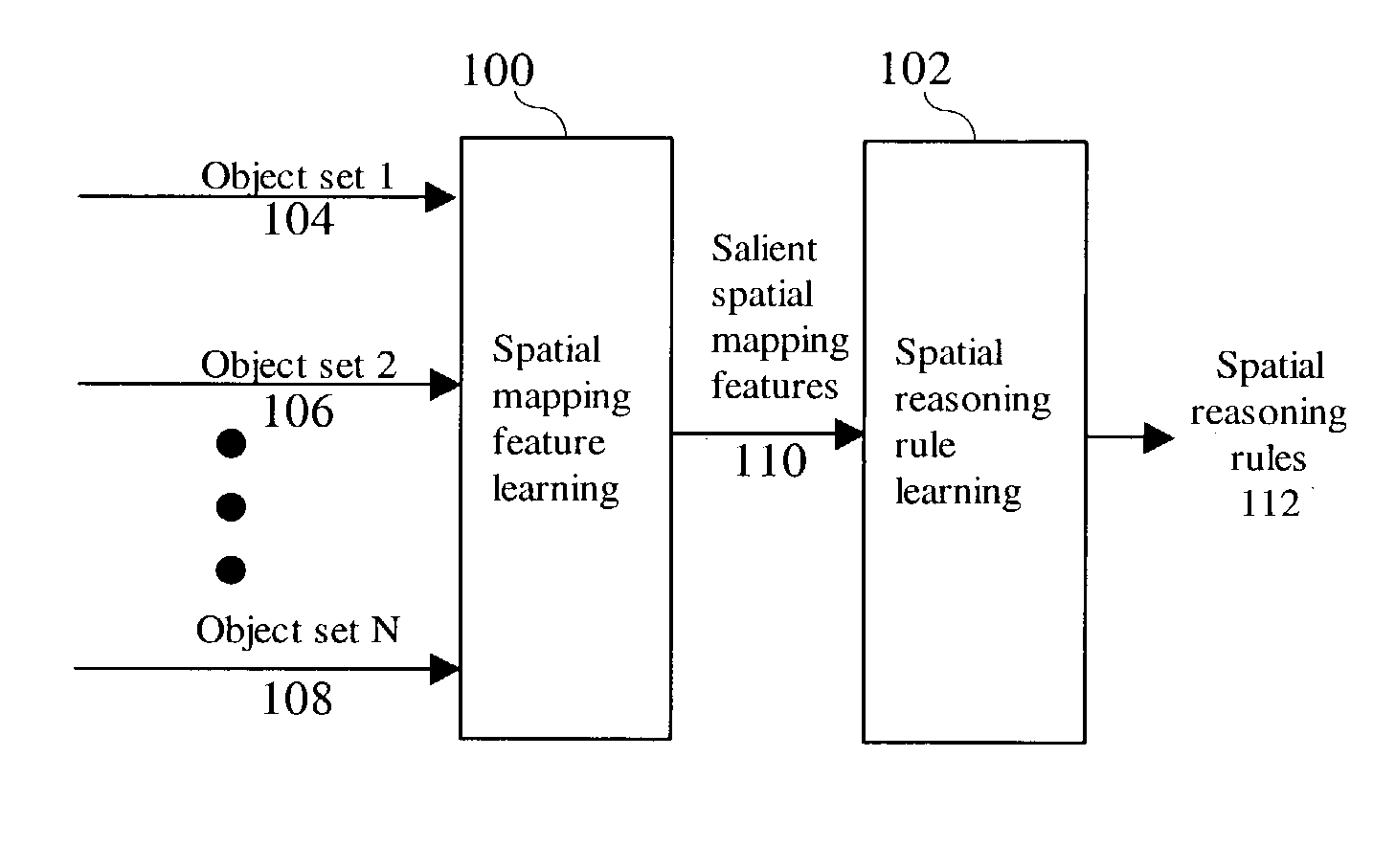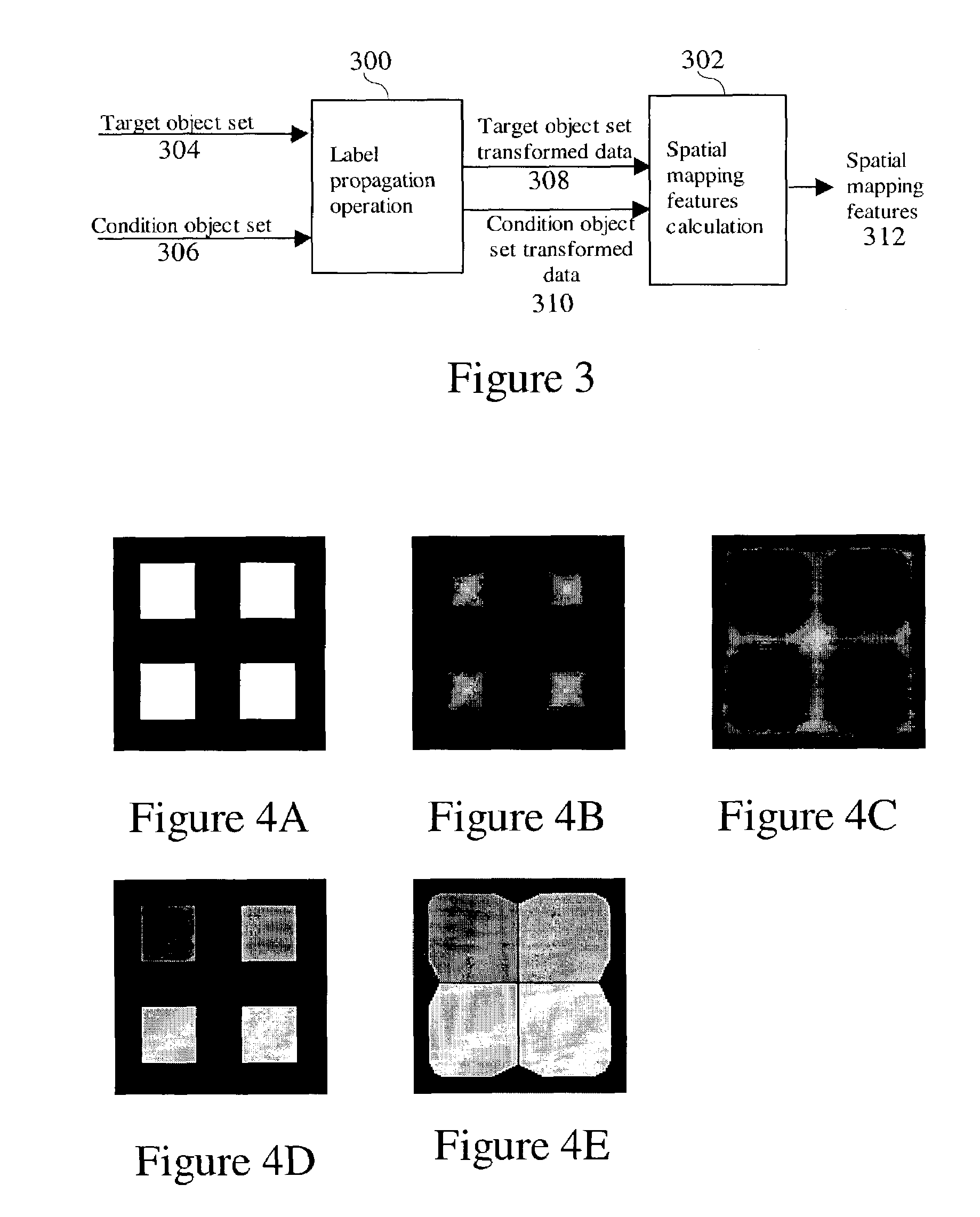Intelligent spatial reasoning
a spatial reasoning and intelligent technology, applied in the field of intelligent spatial reasoning, can solve the problems of inability to automatically generate or discover spatial mapping rules, difficult to handle uncertainty and noise from data and measurements, and difficult to automatically generate spatial mapping features, etc., to achieve the effect of optimizing the discrimination power of features and facilitating the effectiveness of the follow-on feature learning stag
- Summary
- Abstract
- Description
- Claims
- Application Information
AI Technical Summary
Benefits of technology
Problems solved by technology
Method used
Image
Examples
Embodiment Construction
I. Intelligent Spatial Reasoning Process Overview
[0038]The overall processing flow of the spatial reasoning process is shown in FIG. 1. A plurality of object sets 104, 106, . . . , 108 is processed by a spatial mapping feature learning step 100. This step generates a set of salient spatial mapping features 110 that are processed by the follow on spatial reasoning rule learning step 102. The spatial reasoning rule learning step automatically creates spatial reasoning rules 112 that characterize the spatial situations of interest among the plurality of object sets 104, 106, . . . , 108.
II. Spatial Mapping Feature Learning
[0039]The spatial mapping feature learning step generates a comprehensive set of spatial mapping features. The features are subject to a feature learning process to transform and select a set of salient spatial mapping features for follow-on processing. This is shown in FIG. 2. A spatial mapping feature set generation method 200 uses the plurality of object sets 104, ...
PUM
 Login to View More
Login to View More Abstract
Description
Claims
Application Information
 Login to View More
Login to View More - R&D
- Intellectual Property
- Life Sciences
- Materials
- Tech Scout
- Unparalleled Data Quality
- Higher Quality Content
- 60% Fewer Hallucinations
Browse by: Latest US Patents, China's latest patents, Technical Efficacy Thesaurus, Application Domain, Technology Topic, Popular Technical Reports.
© 2025 PatSnap. All rights reserved.Legal|Privacy policy|Modern Slavery Act Transparency Statement|Sitemap|About US| Contact US: help@patsnap.com



